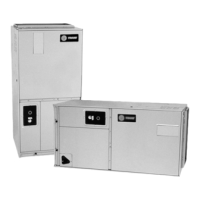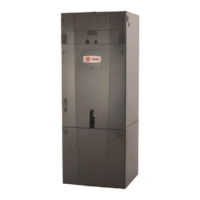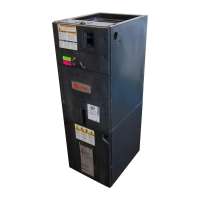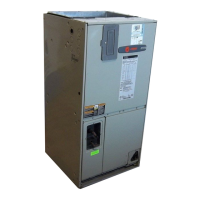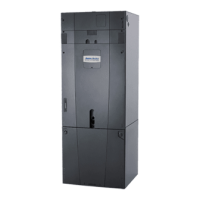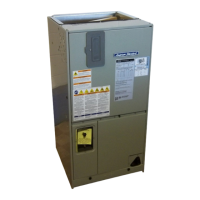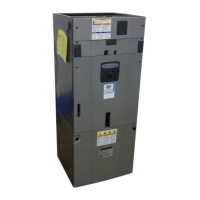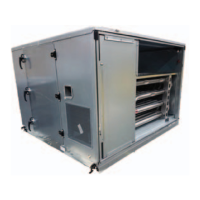Service & Maintenance
RT-SVX35H-EN 103
(f) Use Up and Down Arrow buttons to select the
specific parameter
(g) Press OK
(h) To move to a different digit within a parameter
setting, use the Left and Right Arrow buttons
(Highlighted area indicates digit selected for change)
(i) Use Up and Down Arrow buttons to adjust the digit
(j) Press Cancel button to disregard change, or press
OK to accept change and enter the new setting
4.
Repeat step (3) for each menu selection setting in
T
able 39, p. 102.
5. To reset all programming parameters back to the
factory defaults:
(a) Go to parameter 14-22 Operation Mode
(b) Press OK
(c) Select "Initialization”
(d) Press OK
(e) Cut off the main supply and wait until the display
turns off.
(f) Reconnect the main supply - the frequency
converter is now reset.
(g) Ensure parameter 14-22 Operation Mode has
reverted back to "Norm
al Operation"
No
tes:
• Item 5 resets the drive to the default factory settings.
The program parameters listed in Table 39, p. 102 will
need to be verified or changed as described in Item 3
and Item 4.
• Some of the parameters listed in the Table 39, p. 102
are motor specific. Due to various motors and
efficiencies available, use only the values stamped on
the specific motor nameplate. Do not use the unit
nameplate values.
• A
backup copy of the current setup may be saved to the
LCP before changing parameters or resetting the drive.
See LCP Copy in the VFD Operating Instructions for
details.
6. Follow the start-up procedures for supply fan in the
"Variable Air Volume System" section or the
"Exhaust Airflow Measurement" start-up procedures
for the exhaust fan.
7. After verifying that the VFD(s) are operating properly,
press
the STOP key at the Human Interface Module to
stop the unit operation.
8. Follow the applicable steps in the "Final Unit
Checkout" section to return the unit to its normal
operating mode 9.
Fan Belt Adjustment
The supply fan belts and optional exhaust fan belts must
be inspected periodically to assure proper unit operation.
Replacement is necessary if the belts appear frayed or
worn. Units with dual belts require a matched set of belts
to
ensure equal belt length.
When removing or installing the new belts, do not stretch
them over the sheaves. Loosen the belts using the belt
tension adjustment bolts on the motor mounting base.
Once the new belts are installed, using a Browning or
Gates tension gauge (or equivalent) illustrated in Figure ;
adjust the belt tension as follows;
1
. To determine the appropriate belt deflection;
a
. Measure the center-to-center distance (in inches)
between the fan and motor sheaves.
b. Divide the distance measured in Step a by 64; the
resulting value represents the amount of belt
deflection that corresponds to the proper belt
tension.
2. Set the large O-ring on the belt tension gauge at the
deflection value determined in Step b.
3. Set the small O-ring at zero on the force scale of the
g
auge plunger.
4. Place the large end of the gauge at the center of the belt
span; then depress the gauge plunger until the large O-
ring is even with the top of the next belt —or even with
a straightedge placed across the fan and motor
sheaves as illustrated in Figure 57, p. 104.
a. Remove the belt tension gauge. The small O-ring
now indicates a number other than zero on the
plunger’s force scale. This number represents the
force (in pounds) required to give the needed
deflection.
5
. Compare the "force" scale reading (Step 5) with the
appropriate “force” value listed in Figure 40, p. 104. If
the "force" reading is outside the range, readjust the
belt tension.
Note: Actual belt deflection "force" must not exceed the
maximum “force” value shown in the Figure 40,
p. 104.
Figure 56. Belt tension gauge
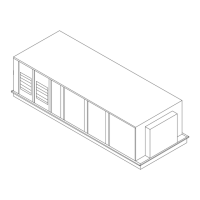
